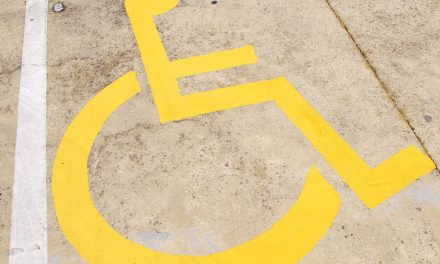
Sciatica and Neck Pain Research

As Chiropractic Physicians, we are masters at juggling a busy schedule. Against all odds, we somehow find the time to be a good husband or wife, take our children to their practices and events, run a busy office and ensure that our patients receive the highest quality of care. Unfortunately, because we maintain such a busy schedule, we must prioritize tasks throughout the day and selectively sacrifice others. I have found that it is very difficult to stay on top of current research.
In the world of Evidence-Based Medicine, it is necessary that we seek out and understand the current literature regarding the chiropractic profession. In this and future articles to come, I will provide brief summaries of the research that has implications on our profession and our clinical decision making.
Centralization: Its Prognostic Value in Patients with Referred Symptoms and Sciatica1
Centralization is the process by which pain radiating from the spine is abolished in response to therapeutic positions and movements2. This phenomenon was first described by Robin McKenzie in the 1950s. As chiropractic physicians, many of us see patients with radicular pain from the lumbar spine, but is centralization of symptoms a prognostic indicator to determine if surgical or conservative treatment is required?
In this study, a total of 114 patients were considered. 54 of these were excluded from the study for a variety of reasons (pain greater than 14 weeks in duration, previous back surgery, serious pathology, cauda equina syndrome, pregnancy, language and refusal to participate) leaving the total number of participants at 60. Each participant was then mechanically evaluated using multiple direction end-range lumbar spinal movements. Following the evaluation, the participants were classified ascentralization group (CG) or noncentralization group (NCG).
Treating providers were then blinded to the prior classification as determined from the medical examination. Participants underwent an initial medical assessment, then a follow up medical assessment 2 weeks later. Those participants with neurologic deficits were advised with bed rest, those without neurologic deficits were advised light mobilization (light strengthening exercises). At the follow up medical evaluation, those patients that were improving were discharged, those who were not showing improvement were sent for further evaluation. During the further evaluation, if a disc herniation was present, those patients underwent surgery.
25 patients were classified as CG, 35 were classified as NCG. A total of 19 participants underwent surgery during the follow-up, 3 from the CG, 16 from the NCG. The odds ratio of the patients from the NCG was 6.2.
Take Home Points
- Patients whose symptoms did not centralize upon initial evaluation were 6 times more likely to undergo surgery.
- The phenomenon of centralization is an excellent predictor of a nonsurgical outcome.
- Lack of centralization identified participants who resolved more slowly.
- Whether we perform mechanical evaluations described by McKenzie2 or not, we should look for the process of centralization of symptoms in our treatments to determine if the patient is likely to have a positive outcome.
Spinal Manipulation, Medication, or Home Exercise With Advice for Acute and Subacute Neck Pain3
In this study, a total of 272 individuals were treated for neck pain with spinal manipulation, medication, or home exercises. Patients were then randomized and treated for nonspecific mechanical neck pain that was 2-12 weeks in duration and rated as a 3 or greater on the VAS.
Spinal Manipulation Group
In the spinal manipulation group, participants were treated by an experienced chiropractic physician with diversified technique to hypomobile regions of the spine (cervical and thoracic). Additional therapy utilized in the treatment included light soft-tissue massage therapy, gentle stretching, and application of cold and hot packs. The number of sessions was left to the discretion of the treating provider.
Medication Group
Participants in the medication group received NSAID’s, acetaminophen, or both as a first-line treatment from the medical provider. In the case in which the NSAIDs or acetaminophen were not effective, the participants were prescribed narcotics with the optional use of muscle relaxants.
Home Exercise Group
Members of the home exercise group were treated two times, 1-2 weeks apart with gentle self-mobilization techniques as determined by the treating therapist. Patients in this group were taught movements that included: retraction, extension, lateral bending, rotation, and scapular depression. The participants were then provided with a booklet, “Treat Your Own Neck” by Robin McKenzie with additional advice.
The primary measure of this study was the participants rating of their pain. This measure was taken every 2 weeks during the 12 study period, with an additional measure at 26 and 52 weeks. Results indicated that there was a significantly greater improvement in the SMT group as compared to the medication group. However, differences between the SMT and HEA group were smaller and not significant, and there was no significant difference between the HEA and medication group. At the 26 and 52-week follow-ups, the SMT maintained a significant positive difference between the medication and HEA groups.
Take Home Points
- SMT was more effective than both medication and home exercise with advice.
- Medication alone was the least effective of all treatment interventions.
- Participants were most satisfied with SMT and least satisfied with medication.
References
- Skytte L, May S, Peterson P. Centralization: Its Prognostic Value in Patients With Referred Symptoms and Sciatica. Spine 2005;30:E293-299.
- McKenzie RA. The Lumbar Spine. Mechanical Diagnosis and Therapy. Waikanae, New Zealand: Spinal Publications; 1981.
- Bronfort G, Evans R, Anderson A, et al. Spinal Manipulation, Medication, or Home Exercise With Advice for Acute and Subacute Neck Pain. Annals of Internal Medicine 2012;156:1-10.

















